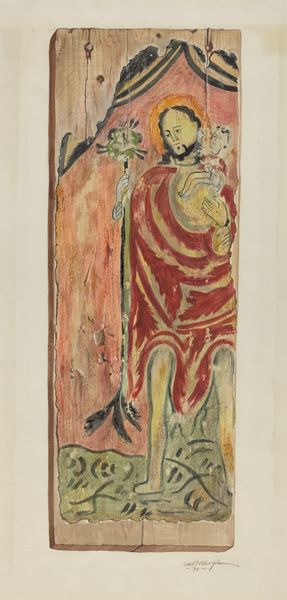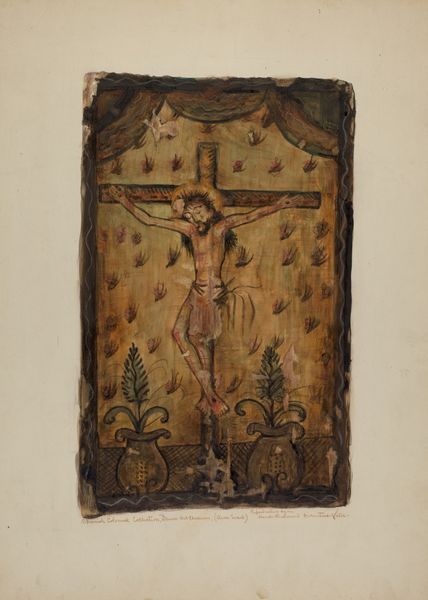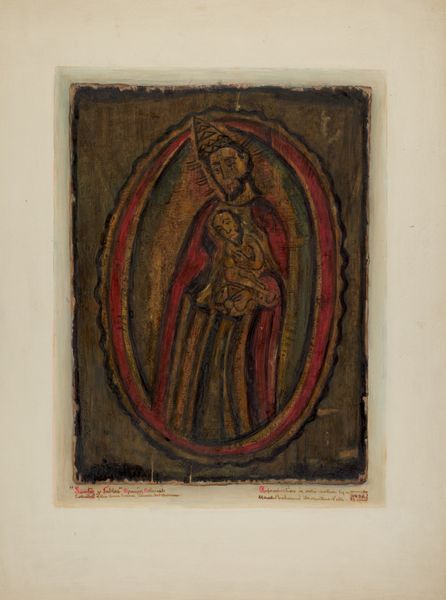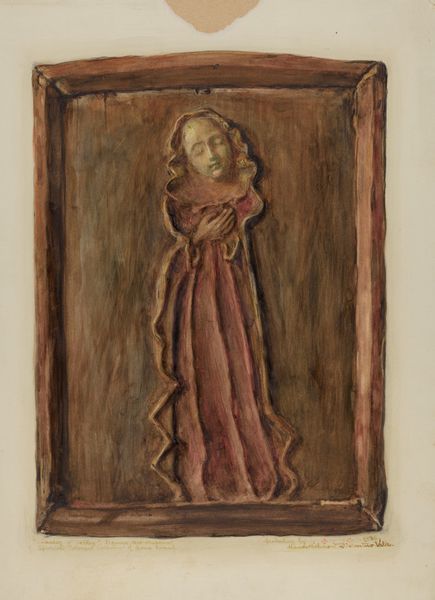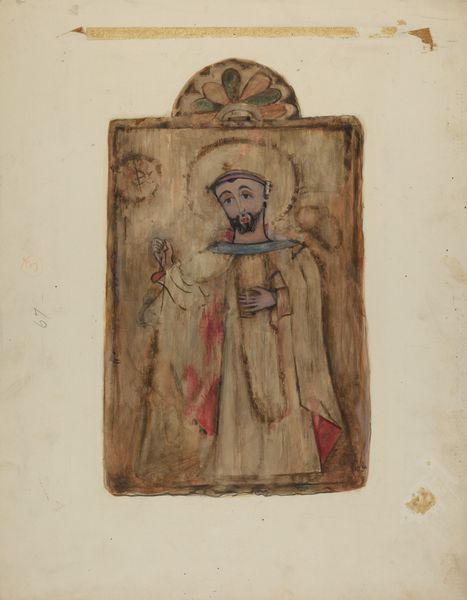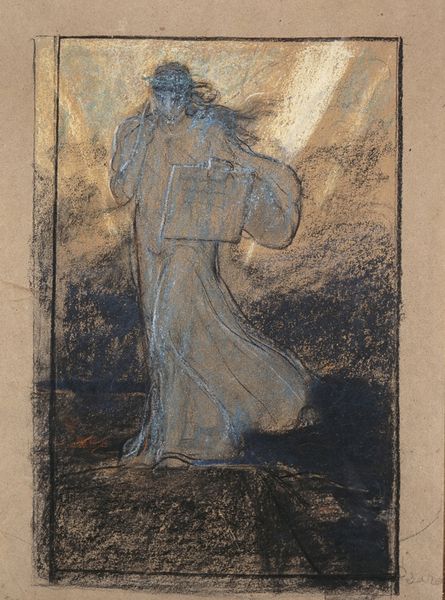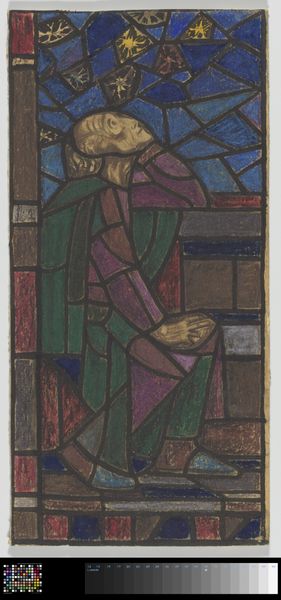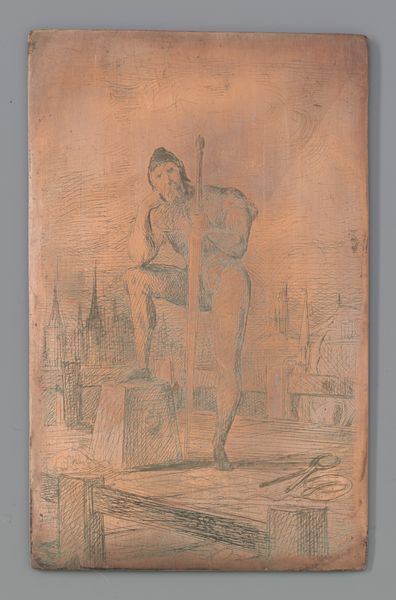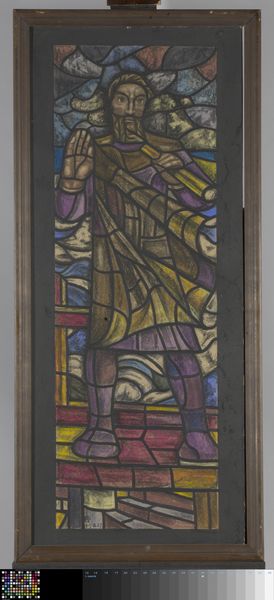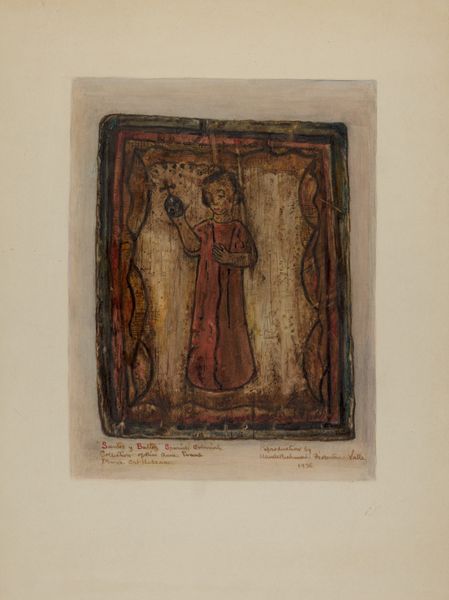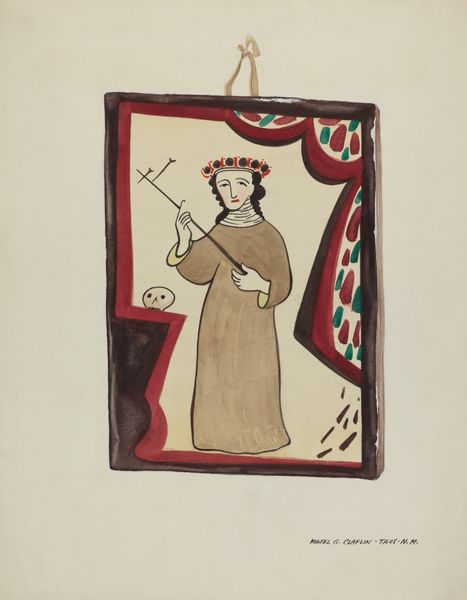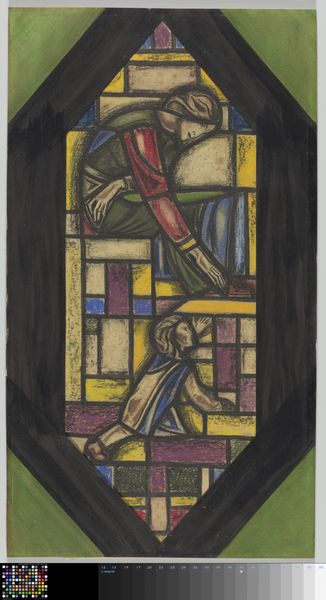
drawing, painting, watercolor
#
portrait
#
drawing
#
medieval
#
painting
#
charcoal drawing
#
figuration
#
watercolor
#
watercolour illustration
Dimensions: overall: 50.6 x 38.1 cm (19 15/16 x 15 in.) Original IAD Object: 11 1/2" x 20" overall
Copyright: National Gallery of Art: CC0 1.0
Curator: This intriguing artwork is entitled "Santo," created in 1936 by Maude Valle. It’s a mixed media piece employing watercolor and drawing techniques. What’s your initial impression? Editor: It feels like stepping back into a medieval manuscript. The muted colors and stylized figure give off a reverent, almost archaic quality, despite being a relatively recent creation. It has a spiritual aura but it also has visible, aged damage. Curator: The stylistic choices clearly allude to religious iconography of the Medieval period. Valle's integration of materials contributes to that effect; we have the figure presented as a saint or holy figure rendered with an intentionally distressed or aged appearance. The choice to portray what resembles a historic object hints to me that this object can be studied under historic parameters and institutional pressures from the past. Editor: Exactly. I see an angel-like figure at the upper-right corner with the main figure appearing as the center of gravity; both floating in space together. How might we view the subject matter beyond a pastiche of medieval art practices? Is there any reading in regards to issues of representation? Curator: The painting uses signifiers and culturally constructed narratives of "the saint" and its associated imagery that have historically circulated power and authority within specific institutions. This suggests it would be important to also recognize the original figures, as the cultural object can often eclipse individual agency and lived experience. Editor: That resonates deeply. "Santo" invites a deconstruction of those very power structures by reimagining that type of imagery with mixed media techniques, potentially empowering new understandings of holiness or perhaps subverting older notions of religion that historically upheld patriarchy. Curator: Furthermore, consider how galleries and exhibitions function. The piece plays with the art market's desire for authenticity by appearing "historical" at a distance, as if it were exhumed from an archive. The institutional forces are in constant negotiation in the role of displaying this cultural object, isn't it? Editor: Absolutely. The intentional artistic decisions invite viewers to look past mere aesthetic appreciation towards critical analysis and, if done properly, hopefully foster thoughtful conversations beyond conventional historical interpretations. This "Santo" embodies far more than meets the eye. Curator: Ultimately, understanding art requires us to see through time, examining what shaped the visual stories we consume and how institutions mediate access to cultural objects.
Comments
No comments
Be the first to comment and join the conversation on the ultimate creative platform.
